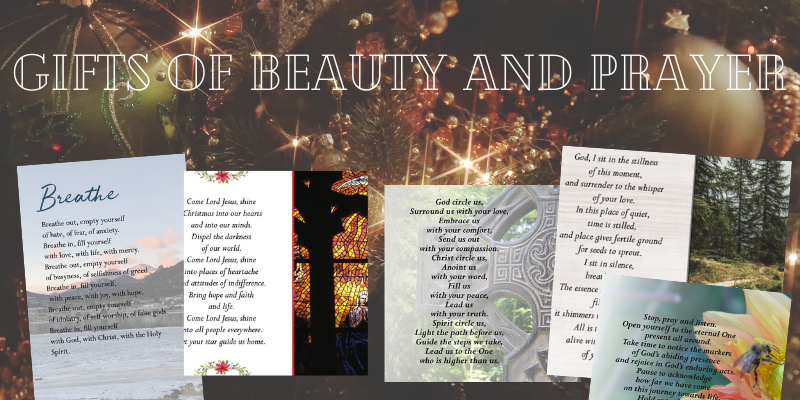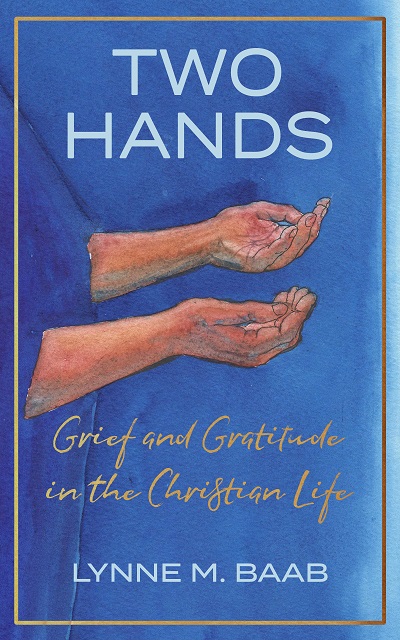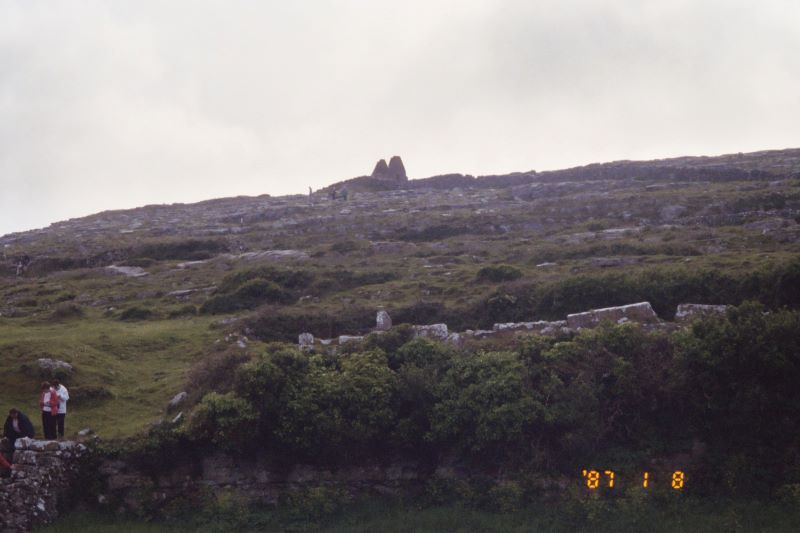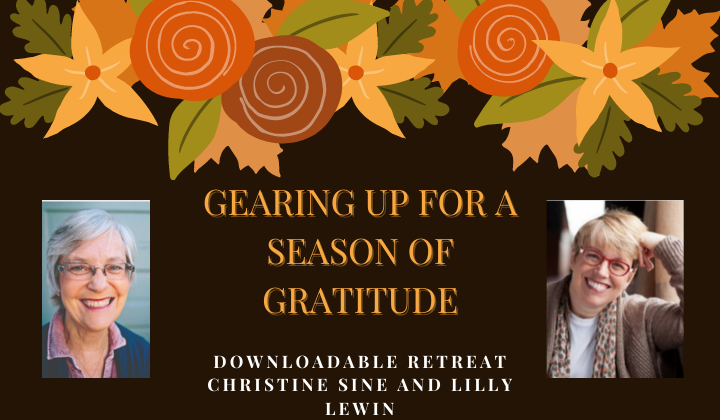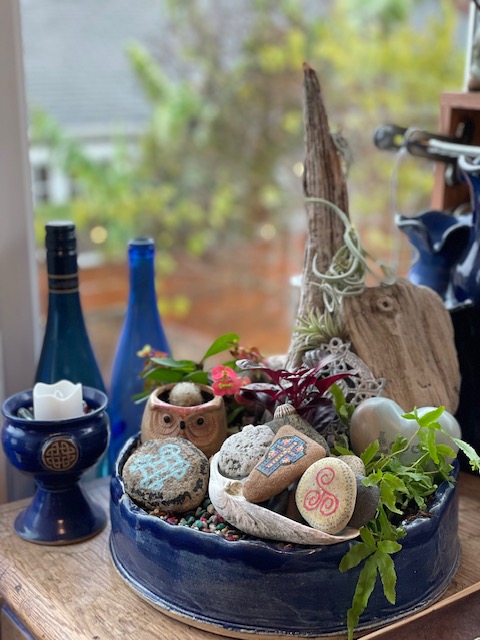We are continuing our Gifts of Advent Series by opening the Gift of Roots and Rootedness and looking at the Family Tree of Jesus in Matthew 1 and the Root of Jesse passage in Isaiah 11.
I’ve been thinking a lot about family. After the absence of family gatherings last year, it is a welcome change to be able to get together in the same place. As we in America head towards Thanksgiving, I’m excited to get to celebrate the holiday in Denver with both of our sons.
What is our legacy of family? What about our roots? Our family tree? It’s fun to learn more about where we come from and our heritage.
Have you ever really thought about the family tree of Jesus?
READ or LISTEN TO THE GENEALOGY OF JESUS in Matthew 1:1-17
This is the genealogy of Jesus the Messiah[b] the son of David, the son of Abraham:
Abraham was the father of Isaac, Isaac the father of Jacob, Jacob the father of Judah and his brothers, Judah the father of Perez and Zerah, whose mother was Tamar, Perez the father of Hezron, Hezron the father of Ram, Ram the father of Amminadab, Amminadab the father of Nahshon, Nahshon the father of Salmon, Salmon the father of Boaz, whose mother was Rahab, Boaz the father of Obed, whose mother was Ruth, Obed the father of Jesse, 6 and Jesse the father of King David. David was the father of Solomon, whose mother had been Uriah’s wife, 7 Solomon the father of Rehoboam, Rehoboam the father of Abijah,
Abijah the father of Asa,
Asa the father of Jehoshaphat,
Jehoshaphat the father of Jehoram,
Jehoram the father of Uzziah,
Uzziah the father of Jotham,
Jotham the father of Ahaz,
Ahaz the father of Hezekiah,
Hezekiah the father of Manasseh,
Manasseh the father of Amon,
Amon the father of Josiah,
and Josiah the father of Jeconiah[c]
and his brothers at the time of the exile to Babylon.
After the exile to Babylon: Jeconiah was the father of Shealtiel,
Shealtiel the father of Zerubbabel,
Zerubbabel the father of Abihud,
Abihud the father of Eliakim,
Eliakim the father of Azor,
Azor the father of Zadok,
Zadok the father of Akim,
Akim the father of Elihud,
Elihud the father of Eleazar,
Eleazar the father of Matthan,
Matthan the father of Jacob,
and Jacob the father of Joseph, the husband of Mary, and Mary was the mother of Jesus who is called the Messiah.
17 Thus there were fourteen generations in all from Abraham to David, fourteen from David to the exile to Babylon, and fourteen from the exile to the Messiah.
What do you notice from the passage that you didn’t notice before?
What questions come up for you as you read or listened to the passage?
What did you notice about the family tree of Jesus?
You can READ the Genealogy of Jesus in other translations
Think about your relatives, the ones you love and the ones who drive you crazy. When you think about your favorite relative, who comes to mind?
When you think about your least favorite relative whose face appears? Why is it so easy to love some folks and so hard to love others? Talk to Jesus about this.
What gifts did your family give you ? Love of nature, sense of humor, spirit of adventure, love of books, cooking, generosity, faith, hospitality? What else? Take some time to be grateful.
Take some time to pray for your family members…
There might have been a lot of negative things in your family…No family is perfect. They all have problems, and there is a great deal of brokenness in many families. Lots of us have worked on our issues in therapy and twelve-step programs and with lots of prayer.
Jesus had an imperfect family too. His family tree reveals the beauty and wonder of God…the human side of Jesus. His relatives might not be invited to some gatherings…they all had their issues, yet they are in the family line of Jesus. And listed in our Bibles for all of us to remember!
The Family tree of Jesus included Prostitutes, Refugees, Cheaters, and a Murdering King, yet they all are included in His lineage. These people prepare us for the type of ministry Jesus will have when he grows up!
One filled with grace and love for ALL PEOPLE!
What hope does this give you?
NOW Consider your Spiritual Family Tree. Who has given you spiritual roots? Who are the people on your spiritual family tree? Save the TREE THE COLORING SHEET below or draw out a tree of your own and fill in the branches. Take time to pray for and thank God for these people who have given you roots and helped you grow.

Your Spiritual Family Tree
Who are you helping get rooted in Jesus? Ask Jesus to show you…take time to pray for this person or persons.
READ ISAIAH 11: 1-10 NIV
A shoot will come up from the stump of Jesse; from his roots a Branch will bear fruit.
The Spirit of the Lord will rest on him—
the Spirit of wisdom and of understanding,
the Spirit of counsel and of might,
the Spirit of the knowledge and fear of the Lord— and he will delight in the fear of the Lord.
He will not judge by what he sees with his eyes,
or decide by what he hears with his ears;
but with righteousness he will judge the needy,
with justice he will give decisions for the poor of the earth. He will strike the earth with the rod of his mouth;
with the breath of his lips he will slay the wicked.
Righteousness will be his belt
and faithfulness the sash around his waist.
The wolf will live with the lamb,
the leopard will lie down with the goat,
the calf and the lion and the yearling[a] together; and a little child will lead them.
The cow will feed with the bear,
their young will lie down together,
and the lion will eat straw like the ox.
The infant will play near the cobra’s den,
and the young child will put its hand into the viper’s nest. 9 They will neither harm nor
destroy
on all my holy mountain,
for the earth will be filled
with the knowledge of the
Lord
as the waters cover the sea.
In that day the Root of Jesse will stand as a banner for the peoples; the nations will rally to him, and his resting place will be glorious.

Amaryllis Bulb
Maybe you’ve been feeling like a withered stump rather than a flowing, growing tree…maybe you need to remember your roots that are deep down in the soil.
Ask Jesus to show you more about your roots of faith today. Then imagine a new shoot growing up out of that old stump.
What new growth needs to happen? What new growth do you want to see happen this Advent season? Talk to Jesus about this.
We have a tradition in our family of planting Amaryllis Bulbs during Advent and Christmas each year. They are really ugly bulbs that grow into beautiful flowers. You might consider planting one and watching it grow and bloom this holiday season. Allow Jesus to speak to you about all he is growing in you as the Amaryllis grows.
Listen to this:
****FEATURED ART is called “SEEN” By my good friend Scott Erickson You can purchase his art and a “SEEN” print here. Scott has a great Advent devotional filled with his amazing work called HONEST ADVENT. Take some time to visit his website and follow him on INSTAGRAM for daily devotions. @scottthepainter
©lillylewin and freerangeworship.com This devotion was a part of our thinplaceNASHVILLE house church this past week. please email me if you’d like a PDF of the whole thing. freerangeworship@gmail.com
God’s world is full of wonder–meditate on something beautiful and experience the awe. Pairing images with prayers, we offer many different types of artful focus for your quiet times. Prayer cards are available for different seasons and reasons from Advent to Lent or as Celtic prayers, Breath prayers, prayers of Wonder, or prayers for a Pause. Most are available to download, or in sets of 1 or 3–so you can enjoy in your own devotions and gift some beauty to a friend! Visit our shop to see our many selections!
by J. Thomas
I listened to another life coach on YouTube about cultivating an attitude of gratitude for the umpteenth time this morning. “Be grateful for what you have. Make a gratitude list.” I have heard this wisdom in various forms for the last decade. Small groups, therapy, 12-step programs, and self-help books. “Give thanks to the Lord, for he is good. His love endures forever.” Despite the knowledge and science that tells me this practice is truth and will help me enormously, I have not made much progress in this area. Why?
I’m not built that way. Nor was I programmed this way from an early age. Quite the opposite. As a perfectionist, I’m trained to see and believe what is wrong with my life. The fact that it takes four positive comments to counteract one negative one tells me it is an uphill battle. If only Jesus could redeem this part of my character into a character strength.
As I bring my gripe to God in surrender, I think He is teaching me a way
As I bring my gripe to God in surrender, I think He is teaching me a way. I have not had success in keeping a gratitude list, for things big or small. But I have made strides in becoming grateful for challenges and suffering. With that in mind, I write in my quiet time journal my “ingratitude list.” A list of grievances – things that feel overwhelming, anxiety-producing, and downright painful.
- I can’t see my five-year-old daughter
- I don’t have income
- I’m going through a divorce
- I’m depressed
- I have people who are opposing my success
This is a heavy list. But with God’s strength made perfect in my weakness, He is calling me to take each item and find a way to be thankful. Read on to see how.

Photo by Marcos Paulo Prado on Unsplash
Philippians 4:6-7. Do not be anxious about anything, but in everything, by prayer and petition, with thanksgiving, present your requests to God. And the peace of God that transcends all understanding will guard your hearts and your minds in Christ Jesus.
Beginning with the first item, I simply believe that there is something to be grateful for, with only a vague, almost non-existent, knowledge of what that could be. A mustard seed of faith.
Then, I simply present my request to God around each item.
- Lord, I request that I will have unsupervised time with my daughter by mid-December.
- Lord, I request that the insurance company will approve my disability claim.
- Lord, I request that my divorce will be complete in the next 3-months and will have a fair conclusion to all.
- Lord, I request that my depression will lift by the end of the week.
- Lord, I request that one of the people who are opposing me will be out of life forever.
Time and time again, I make this list and see God’s promise fulfilled. I am filled with a peace that transcends all understanding. I no longer need to turn these things in my mind over and over again. I’ve written them down. I’ve made my request. I’ve turned them over to Jesus.
Next, comes an even greater miracle. That vague, almost non-existent, belief that there is something to be grateful for incrementally increases. Little by little, I enter into the process of taking my biggest points of pain and realize that there is some hidden gift.
The fulfillment of my prayer request in time becomes secondary to the gift of drawing closer to the Holy Spirit – to God Himself. When God takes away the blessings – the gifts – I have an opportunity to fall in love with the Giver. God wants me to be grateful for the gift of Himself.
When I encounter God, his Spirit works in me to be grateful for thing things that I cannot do in my own will or self-discipline. There is a promise in 12-step literature – “that God will do for me what I cannot do for myself.”
Coming full circle to why I can’t seem to cultivate an attitude of gratitude. Wow! Let me begin with a request.
Lord, I request that I will be become more grateful for the things in my life, both the blessings and the sorrows. Thank you, Jesus.
When God takes away the blessings – the gifts – I have an opportunity to fall in love with the Giver.
Feature photo by Nathan Dumlao on Unsplash
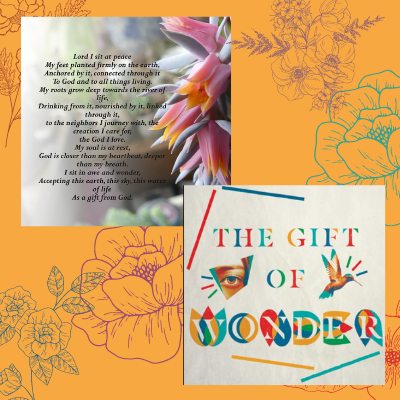 “Can you imagine a God who dances with shouts of joy, laughs when you laugh, loves to play, enjoys life, and invites us to join the fun?”
“Can you imagine a God who dances with shouts of joy, laughs when you laugh, loves to play, enjoys life, and invites us to join the fun?”
The Gift of Wonder book and Prayer Cards bundle invites you deeper into the joyful practices of Awe and Wonder. Join Christine Sine as she encourages us to develop fresh spiritual practices that engage all our senses and help us to live a new kind of spiritual life that embraces the wonder and joy that God intends for us! This bundle includes Christine’s latest book and a beautiful set of 12 cards with illustrations and prayers designed to enrich your study of the book.
by Laurie Klein
Symmetry
A WOMAN BOWS over her potter’s wheel. She centers the clay’s ungainly heft, digs in her thumbs to create a hollow, then coaxes the sides upward.
Her work resembles a slender throat. Those of us watching marvel, the vase birthed like a song between two hands, almost godlike.
Then like a child toppling blocks, with one lowered fist—and a wink—she mashes the delicate lip. The opening warps. The walls cave.
Why raise up a vessel only to crush it?
Now the glistening folds of clay collapse. She flattens them into a spinning disk.
Thumping down fresh clay—on what is now a plate—she repeats the process, drawing the new walls high, then higher.
The wheel slows to a stop, and the deliberate weight of her finger against the lip forms a spout.
“Pressure facilitates pouring,” she says.
Reverently touching the flattened mass upholding the pitcher, she adds: “And this is foundational. The base determines the vessel’s outcome.” She looks at each of us, in turn. No winking now.
“Only the lowly in heart become godly leaders.”
The work of a saint
Today, as on every November 17th, many Christians celebrate a godly leader named Hilda, patron saint of learning and culture.
In 657 A.D., this grand-niece of Northumbria’s king embraced a daunting vocation: managing a co-ed monastery. Under Hilda’s guidance it became the leading abbey of the Anglo-Saxon world, and she, its revered abbess.
Hilda advised kings. She hosted the pivotal synod that determined the future direction of the English church. Five of the monks she mentored later became bishops.
And Cædmon, the abbey herdsman—aging, clumsy, tongue-tied, untutored—grew into his improbable name, which means poet.
A song in the night
During those times an abbey feast meant celebrants would perform a solo when the harp came their way. Ashamed to be song-less, illiterate Cædmon always fled.
One night, huddled in his bed of straw after yet another escape, he heard a voice in a dream: “Sing to me the beginning of all things.”
Cædmon opened his mouth to argue. Instead, out poured spontaneous words and a melody, addressed to the giver of songs in the night—the One addressed in Psalm 42:6. “Every day, you are kind, and at night you give me a song as my prayer to you, the God of my life.” (Contemporary English Version)
The next day the cowherd sang for the abbess.
A Slender Throat
Did he close his eyes? Did his throat go dry?
Abbess Hilda listened, astounded. Then she pronounced his song divinely inspired. To test his gift, she asked him to render a passage of sacred history into verse. After the monks explained it to him, he fulfilled the task.
Thereafter, the abbess encouraged the harp-dodger’s mystical, God-given skill. Uplifted by her patronage, his poetry flourished.
I picture Hilda’s support like a metaphorical plate beneath his unlikely pitcher: Cædmon the cowherd, destined to become the father of English poetry.
Today only one of his praise poems survives. Those words paved the way for later poets like Gerard Manley Hopkins, William Blake. In her poem, “Cædmon,” Denise Levertov writes: “[N]othing was burning, Cædmon cried out, nothing but I, as that hand of fire / touched my lips and scorched my tongue / and pulled my voice / into the ring of the dance.”
“Now we must praise”—that’s the opening line of Cædmon’s first poem. If he could address us today, perhaps that bashful man who hid from the harp might say, Cherish this world. Bless the Source.
Exalted or humbled, be the vessel uniquely raised up or brought down—consecrated to serve, ever-graced by God.
Dear readers, amid this culture of ours spinning out of control, may we likewise support, inspire, and hearten each other.
***
Cædmon’s Hymn (a modern translation)
Now we must praise the protector of the heavenly kingdom
the might of the measurer and his mind’s purpose,
the work of the father of glory, as he for each of his wonders,
the eternal Lord, established a beginning.
He shaped first for the sons of the earth
heaven as a roof, the holy maker;
then the middle-world, mankind’s guardian,
the eternal Lord, made afterwards,
solid ground for men, the almighty Lord.
In what way will you praise God today? Who will you encourage?
*****
The monk known as the Venerable Bede retells the story of Hilda and Cædmon in his Ecclesiastical History of the English People (731 A.D.). Fortunately, before an abbey fire almost destroyed this sole poem in existence today, someone copied the text. It’s now housed in the British Library. View a full set of images of the digitized manuscript here (click to page 5).
Click here for a dramatized video starring St. Hilda and the Legend of the Snakestones. https://www.youtube.com/watch?v=FMQsU1oYKWM
Other sources:
http://www.sthildasacc.org/about-us/who-was-st–hilda-of-whitby.html
https://imagejournal.org/article/caedmons-hymn-the-first-english-poet/
https://www.english-heritage.org.uk/visit/places/whitby-abbey/history-and-stories/caedmon-poetry/
As an Amazon Associate I receive a small amount for purchases made through appropriate links. Thank you for supporting Godspace in this way.
 Prayer cards are available in the shop for many occasions and seasons–from everyday pauses and Lenten ruminations to breath meditations and Advent reflections, enjoy guided prayers and beautiful illustrations designed to delight and draw close. Many are available in single sets, sets of three, and to download–even bundled with other resources!
Prayer cards are available in the shop for many occasions and seasons–from everyday pauses and Lenten ruminations to breath meditations and Advent reflections, enjoy guided prayers and beautiful illustrations designed to delight and draw close. Many are available in single sets, sets of three, and to download–even bundled with other resources!
by Lynne Baab
I was raised by a hyper-optimistic mother. All problems, she believed, should be faced with an upbeat attitude. Grief was okay – as long as it was brief. And grieving was limited to deaths of loved ones and major catastrophes.
As a young adult I discovered Jeremiah’s sadness and angst. He experienced and expressed emotions I had always considered to be negative, and his honesty before God felt soothing and healing. Later the wild and passionate emotions of the Psalms gave me further permission to experience a wide variety of feelings, including sadness and anger, and to bring those emotions into God’s presence.
My journey of learning how to deal with “negative” emotions was further enhanced in 2019, when I came across a quotation by psychotherapist Francis Weller: “The work of the mature person is to carry grief in one hand and gratitude in the other and to be stretched large by them.” Godspace’s curator Christine Sine wrote a post about the quotation from Weller last month. She mentions that she first heard the quotation in a book that she found very valuable. That book is now out – Two Hands: Grief and Gratitude in the Christian Life – and I am the author.
The book is the fruit of two years of pondering and trying to learn to live with grief in one hand and gratitude in the other, and to allow myself to be stretched large by both of them. One of my major insights is that the very nature of the Christian Gospel involves both grief and gratitude. We grieve the brokenness and pain in our world that made it necessary for Jesus to come to earth, and we rejoice and give thanks that he did. We juxtapose this grief and gratitude every time we have Holy Communion. We hold grief in one hand and gratitude in the other simultaneously.
In pondering this picture of two hands, I spent a lot of time in the psalms, where a pattern of pain/anger/grief almost always shifts to thanks/praise. I am fascinated by the pivot points in many psalms of lament. These pivot points make clear that sometimes the grief hand is quite heavy and full, and other times the thankfulness hand predominates.
Psalm 77 begins with expressions of sadness and pain, and then in verse 10 the psalm writer describes the way their perspective has changed: “And I say, ‘It is my grief that the right hand of the Most High has changed.’” The second half of the psalm is filled with thanks and praise.
So often when we are grieving we feel that God is distant and uninvolved. Psalm 10 begins with 13 verses of anger and grief about the prosperity of the wicked. Then in verse 14 the psalm writer expresses great joy at God’s involvement in human life: “But you do see! Indeed you note trouble and grief, that you may take it into your hands; the helpless commit themselves to you.”
In this journey of grief and gratitude, I have learned that the extreme optimism I was raised with has continued to influence me. I have a strong practice of thankfulness that my husband and I began more than 25 years ago, and the consistent practice of gratitude has been transforming. This recent journey focused on two hands has revealed that deep inside, I always expected that if I could only be thankful enough, then I wouldn’t feel sad about anything. Finding so many places where grief and gratitude are juxtaposed in the Bible has helped me understand that grief will always be a significant factor in human life on earth simply because our brokenness is so profound. We can honestly grieve human pain and selfishness, as well as natural disasters and nasty viruses, while we also give thanks for God’s amazing gifts: the fresh air after a rain, the soft fur on a kitten or puppy, the sweetness of fresh fruit, a glorious sunset, the delights of a good novel, an interesting conversation with friends, the hug of a child.
I am hoping churches might recommend my book for Advent or Lent, since the themes fit those church seasons so well. Each chapter has discussion questions, so small groups can discuss it. I’ll close with Christine Sine’s endorsement for my book, a thrilling affirmation that this journey I’ve been on will be helpful for others, too.
“Two Hands: Grief and Gratitude in the Christian Life is one of the most important books I have read in the last few months. I have long been an advocate for gratitude as a way of life, but Lynne Baab helped me understand that grief is just as important and often the missing element in our practices. We all need a better understanding of how grief and gratitude intertwine in a healthy life. This is a must-read book for everyone as we emerge from the challenges of the COVID pandemic.”
As an Amazon Associate I receive a small amount for purchases made through appropriate links. Thank you for supporting Godspace in this way.
Christine Sine and Lilly Lewin are hoping you’ll join them THIS Saturday November 20th at 9:30 am PST. for a retreat to rekindle the wonder of the Advent season! This year of isolation and another Christmas in a pandemic has taken its toll–we are so excited to present what we believe is one of the most important events we have hosted! Register here to either join us live or download the retreat after the live session to view and experience at your convenience. Come with a creative heart, be inspired, have fun, and reconnect with the WONDER of the season.
poetry by Ana Lisa de Jong
Today I can hear your ‘thank you’
as a great resounding chorus on the breeze.
To bring me to my own knees
aware of everything I’m blessed by.
And I wonder if you can hear my response,
or the earth even.
I think I can hear the earth’s small intake
of breath, of release, of relief.
There being so much loss and death.
So much returning to dust, that the
earth needs our thanks for the
task of its receiving.
It hurts with us, and we,
with our gratitude,
take up our fork turning compost,
these ashes of our days,
that they might break down
to something good.
Something too, that future generations
might call themselves blessed.
For what is thank you for?
The light, the dark.
These elements to build the soil upon
which our children walk.
Thank you, thank you, thank you –
all of it grace.
Ana Lisa de Jong
Living Tree Poetry
Photo by Johannes Plenio
 There is still time to join us THIS Saturday November 20th at 9:30 am PST! This interactive, multi-sensory creative retreat with Christine Sine and Lilly Lewin will inspire you to rekindle the wonder this Advent season. Register here to either join us live or download the retreat after the live session to view and experience at your convenience. Come with a creative heart, be inspired, have fun, and reconnect with the WONDER of the season.
There is still time to join us THIS Saturday November 20th at 9:30 am PST! This interactive, multi-sensory creative retreat with Christine Sine and Lilly Lewin will inspire you to rekindle the wonder this Advent season. Register here to either join us live or download the retreat after the live session to view and experience at your convenience. Come with a creative heart, be inspired, have fun, and reconnect with the WONDER of the season.
writing and photos by Elaine Breckenridge
In 2007, I ventured to climb a hill on Inis Mor, one of the Aran Islands off the coast of Ireland. The goal of the climb was to visit a tiny hermitage perched on top. Dating from the 7th century, Teampall Bheanain is considered the smallest church in Ireland.
From the bottom of the holy hill, it looked like an easy climb. I was mistaken! There were boulders to dodge or climb over. Moss-covered rocks were deceptively slippery. Loose stones made it all too easy to roll an ankle. It was a feat to make it to the top, and yet the trek was worth it. There was a lovely view of the countryside below on one side and on the other, a magnificent view of the sea. It was breathtaking. As the sun began to set, streams of light kissed the sea and land. I could understand why monks had a cell there. It is a place of solitude, not loneliness.
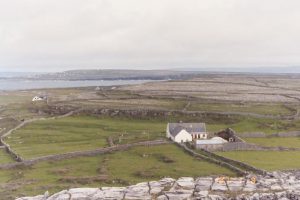
Inis Mor Village View
Evening was coming on and it was time to make the descent down. The descent was certainly more difficult and treacherous than the ascent! In addition to slipping on the rocks, gravity was doing its best to take me down. It took every bit of mental concentration to control the proper placement of footing in order to remain safe. Now, I understood why a monk would stay up there days at a time. It was in fact physically difficult to come down from that mountain top!
In the pre-Christian Celtic religion, hills were holy places, thin places that were climbed so that one could be near the sky gods. Climbing was already an important feature of their spirituality. When Christianity came to Ireland, the earliest missionaries found a people receptive to the notion of God coming down from heaven in the birth of a person named Jesus. Christian Celtic preachers and teachers, using their gifts of imagination, put flesh and bones on the doctrine of the Incarnation. In his book, A Holy Island Prayer Book, Anglican priest Ray Simpson describes God as “bounding down a rocky mountain with a hand reaching out in love to the people waiting below.”
Having gone up and down that rocky Irish hill, I can see how that metaphor perfectly illustrates the grace of God. The spiritual life is about receiving God, who with a sense of urgency and joy leaps over boulders and runs down a rocky hill, just in order to be with us. It is not about making an arduous trip up and down a difficult hill. Instead, it is waiting with expectant hearts for God to come to us.
The season of Advent is the great season of expectation. The scripture readings and the church invite us to watch and prepare our hearts for the annual celebration of the birth of Jesus. This year, Advent begins on Sunday, November 28th. However, the season of Celtic Advent begins on November 15th. Celtic Christians kept the season of Advent for forty days, just like the season of Lent. This longer season of Advent offers us additional space and time to repent–that is, to walk (or not!) in a new direction. We are invited to let go of our striving so that we can experience God’s love and grace without our effort.
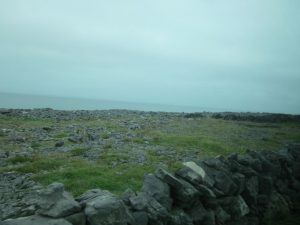
Inis Mor Resting Spot 2016
In 2016, I returned to that same holy hill and looked forward to making the ascent again. But nine years later with an arthritic hip, I couldn’t do it. It was disappointing. Then, I remembered Ray Simpson’s lovely metaphor. I sat down, rested, and sure enough, God’s peace and joy filled my heart. Waiting with an expectant heart brought God’s love.
There is plenty to do in the fleeting days ahead of Christmas. Carving out time for receptivity, stillness, and rest may seem like a luxury we can’t afford. And yet, I have discovered that simplifying is a transformative process. As the German mystic-philosopher Meister Eckhart said, “the spiritual life has much more to do with subtraction than it does with addition.” (Quoted by Richard Rohr in Breathing Under Water)
We don’t always have to climb a hill by adding more into our lives. Doing less, and inviting God to fill our hearts, really does work. If you have not taken that path recently; try it. It will be well worth the journey.
As an Amazon Associate I receive a small amount for purchases made through appropriate links. Thank you for supporting Godspace in this way.
Thanksgiving is just around the corner. In the busyness of the season, we can sometimes lose our own centering. What does gratitude mean, even when we are grieving or busy? Explore ideas of gratitude, enjoy handouts and 4 video modules, an origami box tutorial, and more with Christine Sine and Lilly Lewin! This retreat is formatted as an online course so you have 180 days of access to work through the retreat at your own pace.
Today is the first day of Celtic Advent, and once more I am relishing this early taste of Advent. I love that Celtic Advent begins 40 days before Christmas Day. Celtic Christians always prayed and fasted for 40 days in preparation for any major life event, whether it be the planting of a new monastic center or the beginning of a new adventure, as well as for preparation for Christmas and Easter. Beginning now gives us an opportunity to focus on the real meaning of the season before the consumer culture ramps up to a pre-Christmas frenzy.
Over the weekend I completed my new Celtic-themed contemplative garden which now sits beside me as a focus for my morning meditations and a reminder to pause and pray at intervals throughout the day. I also pulled out my set of Celtic prayer cards which I will use as prayer prompts each morning. As well as that I intend to revisit Brenda Griffin Warren’s wonderful online pilgrimage Celts to the Creche that provides a Celtic saint to walk us through each of the 40 days of Advent. Tonight as part of our community meeting we will light our beautiful oil lamp and small tea lights (adapted from Lilly’s Corporate Advent Wreath idea), and share some of our Celtic prayers. We will perform a similar ritual each week throughout the Advent season, possibly adding some Celtic drawing or rock painting one week. I look forward to this fun way to celebrate our extended Advent season.
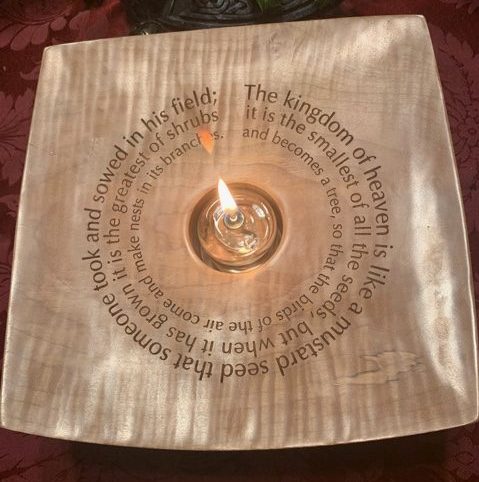 This is such a rich and beautiful way to begin Advent and set our hearts intentionally towards our celebration of the birth of Christ. But it does require a great deal of intentionality. As you can imagine my Celtic-themed garden did not just emerge. Over this last week I spent quite a few hours dreaming, imagining and then creating my garden. As usual I used mainly recycled supplies, pulling out some of my favourite Celtic crosses and painted rocks, including the beautiful Celtic cross painted by Joyce Winthrow at one of my Celtic workshops. I loved incorporating the driftwood and small plants, then at the last minute inserted the owl planter. These all reminded me of the Celtic love of creation and their belief that creation is translucent and the glory of God shines through it. Gazing at my garden and reminding myself of that brings a smile to my face every time.
This is such a rich and beautiful way to begin Advent and set our hearts intentionally towards our celebration of the birth of Christ. But it does require a great deal of intentionality. As you can imagine my Celtic-themed garden did not just emerge. Over this last week I spent quite a few hours dreaming, imagining and then creating my garden. As usual I used mainly recycled supplies, pulling out some of my favourite Celtic crosses and painted rocks, including the beautiful Celtic cross painted by Joyce Winthrow at one of my Celtic workshops. I loved incorporating the driftwood and small plants, then at the last minute inserted the owl planter. These all reminded me of the Celtic love of creation and their belief that creation is translucent and the glory of God shines through it. Gazing at my garden and reminding myself of that brings a smile to my face every time.
The Celts approached God with awe, reverence and wonder–but also saw God as an essentially human figure intimately involved in all creation and engaged in a dynamic relationship with it. This interweaving of intimacy and mystery embraced the Trinity as a family and each family unit–be it family, clan, or tribe–was seen as an icon of the Trinity. The Trinity was a very real presence in all aspects of life and creation, and an almost tangible comforter and protector who could ward off evil forces, as we see in this simple prayer.
Three folds of the cloth yet only one napkin is there,
Three joints in the finger, but still only one finger fair,
Three leaves of the shamrock, yet no more than one shamrock to wear,
Frost, snow-flakes and ice, all in water their origin share,
Three persons in God, to one God alone we make prayer.
I love the Celtic belief that only a thin veil separates this world from the next. They took seriously Hebrews 12:1 “Seeing we are compassed about with so great a cloud of witnesses” and had an almost physical sense of the great company of heaven which surrounded God, embracing not just saints and friends who had died but the whole host of angels and other heavenly powers. When you raised your eyes to heaven you raised them to a vast host. The Celtic Christian at prayer was consciously a member of the great company that stretched from the persons of the Trinity through the powerful angelic throngs to the risen saints. They were regarded very much as friends and companions in this world and addressed almost as one would neighbours or members of the family.
Scottish theologian Prof John Macquarrie observed that ‘the Celt was very much a God-intoxicated person whose life was embraced on all sides by the divine Being.” I long for that same intoxication and intimacy with God, which is one of the reasons I am so enarmoured of the Celtic saints who thrived in the fifth to eleventh centuries.
I pray that you too are desiring this intimate and intoxicating presence of God this Advent. I suggest you take time today to prayerfully consider how you could encourage this to happen as you walk through Advent this year.
Watch John O’Donohue read his beautiful blessing BEANNACHT and sit in silence considering how you could enter into Advent today. Is there a prayer or Celtic symbol you could use as a daily prompt? Is there something you could create to help you focus? What new commitment is God asking of you today?
Join Christine Sine and Lilly Lewin THIS Saturday, November 20th 9:30-12:30 PST (check my timezone) for an interactive, multi-sensory, creative retreat focused on the WONDER OF ADVENT! This retreat will be LIVE via zoom, but if you are unable to join live, you can sign up to watch the recording and participate later! Come with a creative heart, be inspired, have fun, and reconnect with the WONDER of the season. And did you know? If you have purchased a course from us before, we offer a discount. We also offer a group discount for groups over 5. Email us to get the code!
As an Amazon Associate, I receive a small amount for purchases made through appropriate links.
Thank you for supporting Godspace in this way.
When referencing or quoting Godspace Light, please be sure to include the Author (Christine Sine unless otherwise noted), the Title of the article or resource, the Source link where appropriate, and ©Godspacelight.com. Thank you!


